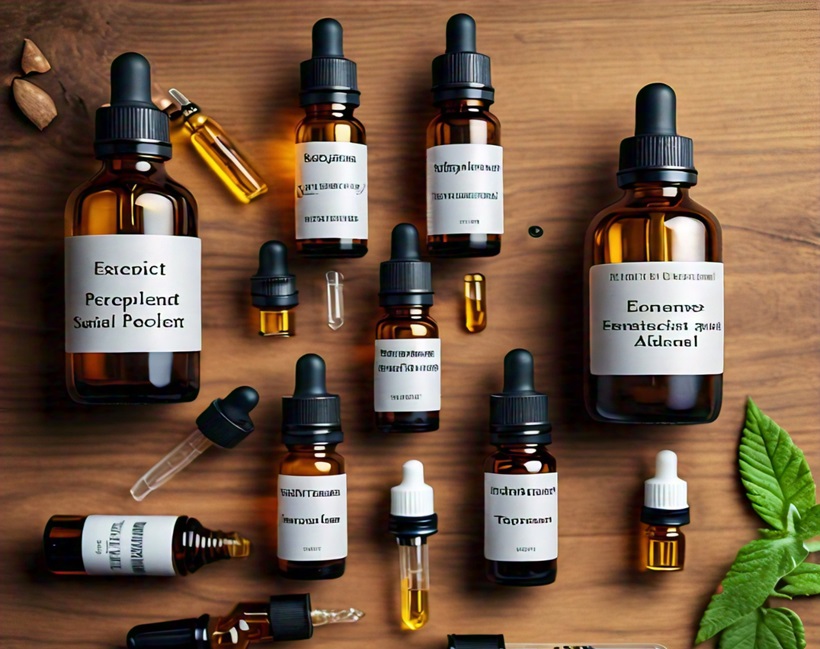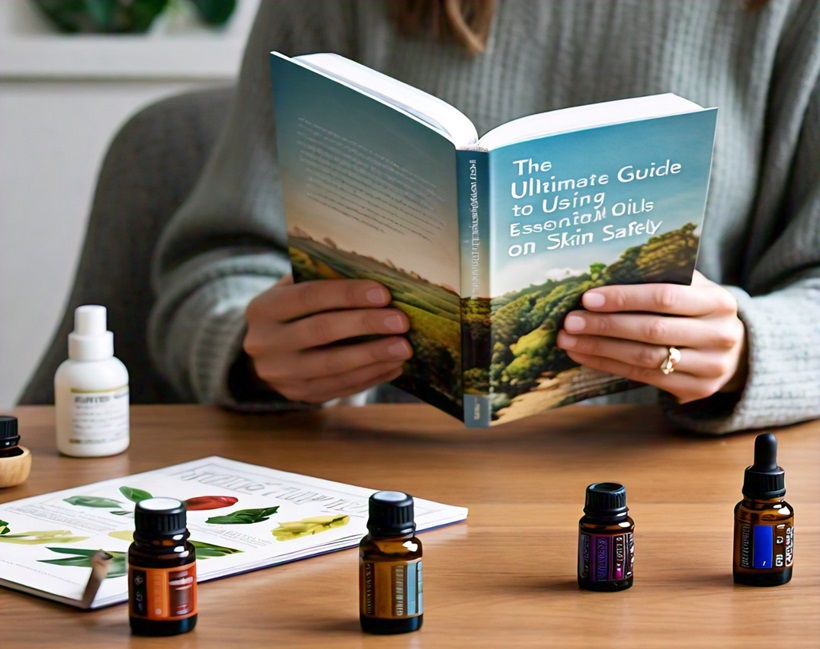Which Essential Oil Terpenes Repel Flies Effectively
Flies are more than just a nuisance; they can pose significant health risks by spreading diseases and contaminating food. While chemical repellents are commonly used, they often come with unwanted side effects and environmental concerns. This is where essential oils come into play. Known for their natural and safe properties, essential oils are an effective alternative for repelling flies. In this guide, we will explore the terpenes in essential oils that make them so effective and provide practical tips on how to use them.
Understanding Terpenes
What Are Terpenes?
Terpenes are organic compounds found in plants that are responsible for their aroma and flavor. They play a crucial role in the plant’s defense mechanism against pests and pathogens. In essential oils, terpenes are the active ingredients that provide various therapeutic benefits, including insect repellent properties.
How Terpenes Repel Flies
The science behind terpenes repelling flies lies in their ability to disrupt the insect’s olfactory senses. Flies rely heavily on their sense of smell to locate food and breeding sites. Terpenes interfere with this process, making it difficult for flies to navigate and survive. Specific terpenes like linalool, eucalyptol, and citral are particularly effective in repelling flies.
Top Essential Oils That Repel Flies
Lavender Oil
- Key Terpenes: Linalool, Linalyl acetate
- How It Works: Lavender oil is known for its calming scent, but it is also highly effective in repelling flies. The terpenes in lavender oil disrupt the fly’s nervous system, making it difficult for them to function.
- Application Methods: Use lavender oil in a spray solution, diffuser, or soak cotton balls and place them in fly-prone areas.
Eucalyptus Oil
- Key Terpenes: Eucalyptol, Alpha-pinene
- Effectiveness: Eucalyptus oil has a strong, menthol-like scent that flies find repulsive. The terpenes in eucalyptus oil act as a natural insecticide.
- Usage Tips: Mix eucalyptus oil with water in a spray bottle and use it around windows, doors, and other entry points.
Peppermint Oil
- Key Terpenes: Menthol, Menthone
- Benefits: Peppermint oil not only repels flies but also other pests like ants and spiders. The strong scent of menthol overwhelms the fly’s senses.
- Practical Applications: Use peppermint oil in a diffuser or create a spray solution for outdoor use.
Lemongrass Oil
- Key Terpenes: Citral, Geraniol
- How to Use It Effectively: Lemongrass oil is highly effective in repelling flies due to its high citral content. It can be used in spray solutions or diffusers.
- Application Tips: Combine lemongrass oil with water and a few drops of dish soap to create a potent fly repellent spray.
Tea Tree Oil
- Key Terpenes: Terpinen-4-ol, Alpha-terpineol
- Effectiveness: Tea tree oil has strong antimicrobial properties that make it effective in repelling flies and other insects.
- Application Methods: Use tea tree oil in a spray solution or soak cotton balls and place them in areas where flies are a problem.
Citronella Oil
- Key Terpenes: Citronellal, Geraniol
- Why It Works: Citronella oil is one of the most well-known natural insect repellents. The terpenes in citronella oil mask the scents that attract flies.
- How to Use It: Use citronella oil in candles, diffusers, or spray solutions for outdoor and indoor use.
Practical Application Methods
Spray Solutions
Creating a spray solution is one of the most effective ways to use essential oils for repelling flies. Here’s how you can make and use these sprays:
- Ingredients: Essential oil of your choice, water, and a few drops of dish soap.
- Instructions: Mix 10-15 drops of essential oil with 1 cup of water and add a few drops of dish soap. Shake well before each use.
- Application: Spray around windows, doors, and other entry points. Reapply as needed.
Diffusers and Vaporizers
Using essential oils in diffusers or vaporizers can help keep flies away from indoor spaces. Here are some tips:
- Types of Diffusers: Ultrasonic, nebulizing, and heat diffusers.
- Best Practices: Use a few drops of essential oil in the diffuser and place it in areas where flies are a problem. Ensure good ventilation to distribute the scent evenly.
Soaked Cotton Balls and Sachets
Soaking cotton balls in essential oils and placing them in strategic locations can be an effective way to repel flies. Here’s how:
- Instructions: Soak cotton balls in essential oil and place them in small sachets or containers.
- Placement: Put the sachets in areas where flies are commonly found, such as kitchens, bathrooms, and near garbage bins.
Topical Applications
For personal protection, essential oils can be applied topically. However, it’s important to follow safety guidelines:
- Dilution: Always dilute essential oils with a carrier oil (e.g., coconut oil, almond oil) before applying to the skin.
- Application: Apply the diluted oil to exposed skin areas, such as arms and legs. Avoid contact with eyes and mucous membranes.
Additional Tips and Precautions
Combining Essential Oils
Combining different essential oils can enhance their effectiveness. Here are some recommended blends:
- Lavender and Eucalyptus: A calming yet potent blend for indoor use.
- Peppermint and Lemongrass: A strong combination for outdoor use.
- Tea Tree and Citronella: Effective for both indoor and outdoor applications.
Safety Precautions
While essential oils are generally safe, it’s important to take some precautions:
- Allergic Reactions: Perform a patch test before using any essential oil on your skin.
- Safe Handling: Store essential oils in a cool, dark place away from children and pets.
- Environmental Impact: Be mindful of the impact on pets and other non-target organisms. Avoid overuse and ensure proper ventilation.
Environmental Considerations
Using essential oils responsibly can help minimize their impact on the environment:
- Eco-Friendly Practices: Use reusable containers for spray solutions and diffusers. Avoid single-use plastics.
- Pet Safety: Some essential oils can be harmful to pets. Ensure that areas treated with essential oils are well-ventilated and that pets do not have direct contact with the oils.
Conclusion
In summary, essential oils offer a natural and effective solution for repelling flies. By understanding the role of terpenes and how they disrupt the behavior of flies, you can choose the right essential oils for your needs. Whether you prefer lavender, eucalyptus, peppermint, lemongrass, tea tree, or citronella oil, there are various practical application methods to suit your preferences. Combining different oils can enhance their effectiveness, and following safety precautions will ensure a safe and pleasant experience.
Key Essential Oils and Their Terpenes
| Essential Oil | Key Terpenes | Application Methods |
|---|---|---|
| Lavender | Linalool, Linalyl acetate | Spray, Diffuser, Cotton Balls |
| Eucalyptus | Eucalyptol, Alpha-pinene | Spray, Diffuser |
| Peppermint | Menthol, Menthone | Spray, Diffuser, Topical |
| Lemongrass | Citral, Geraniol | Spray, Diffuser |
| Tea Tree | Terpinen-4-ol, Alpha-terpineol | Spray, Cotton Balls |
| Citronella | Citronellal, Geraniol | Candles, Diffuser, Spray |
By following this guide, you can effectively use essential oils to keep flies at bay, ensuring a healthier and more pleasant environment. Embrace the power of nature and enjoy a fly-free space with these natural solutions.














Post Comment